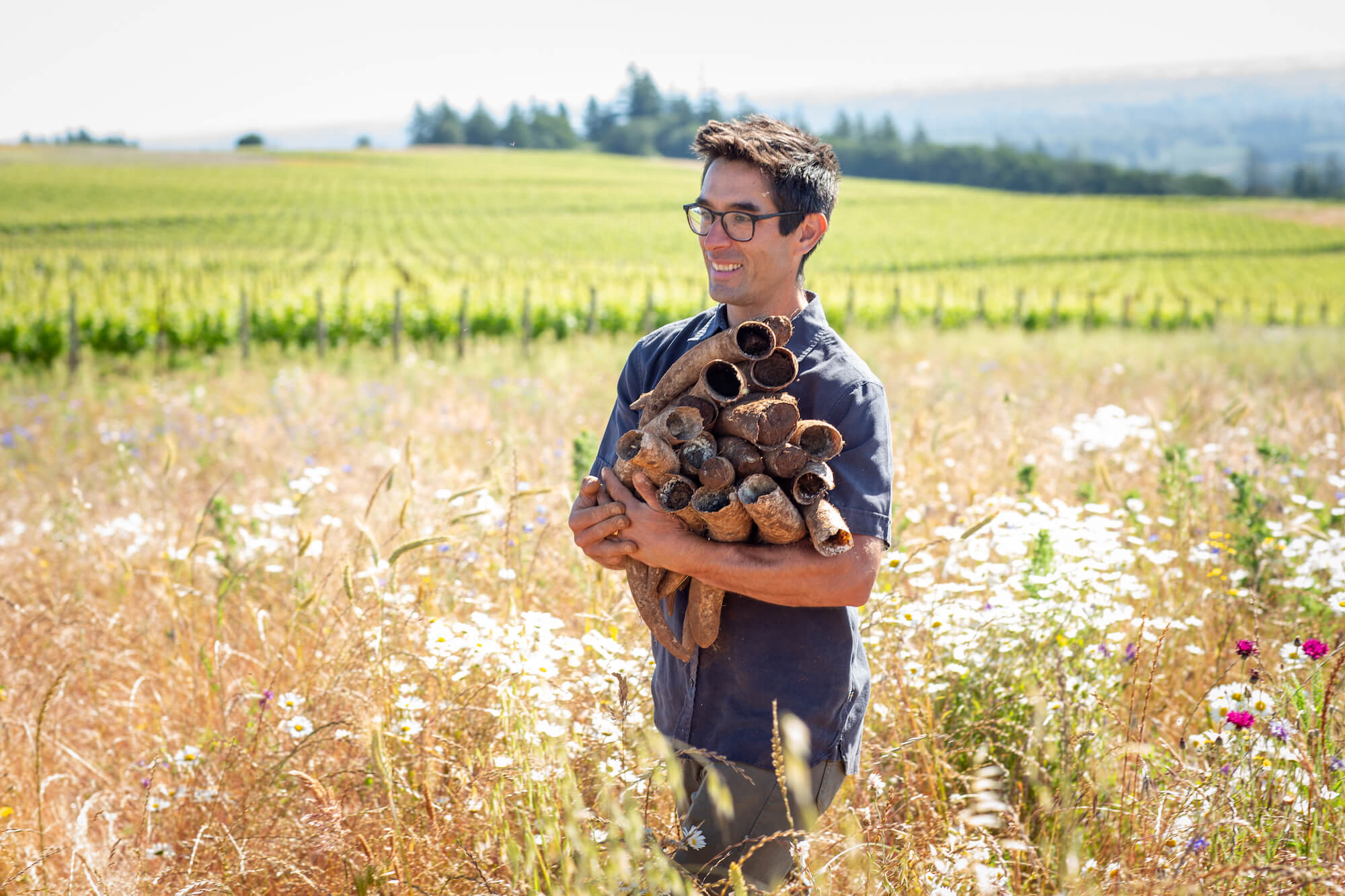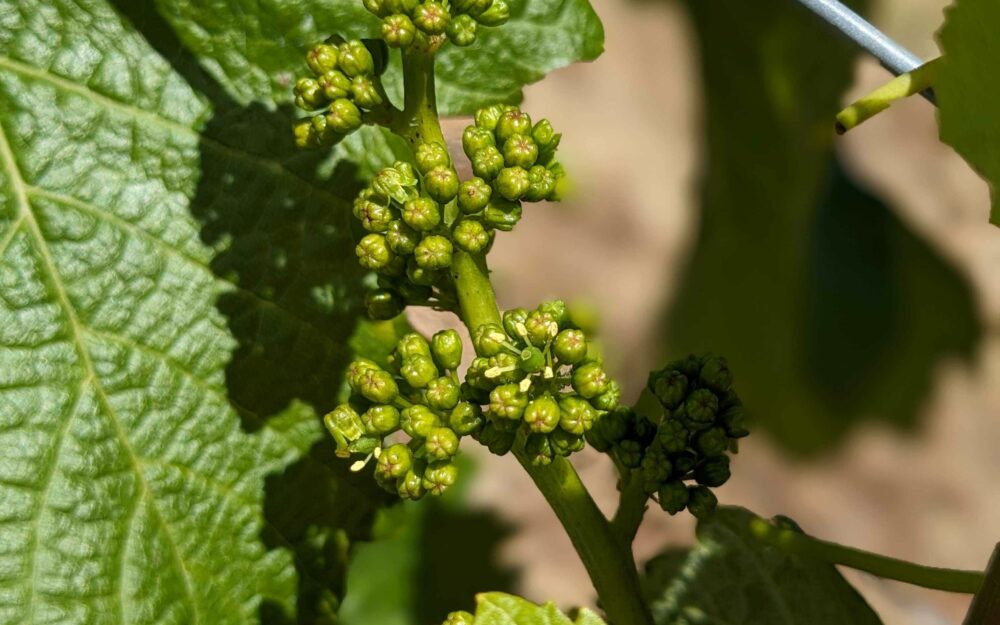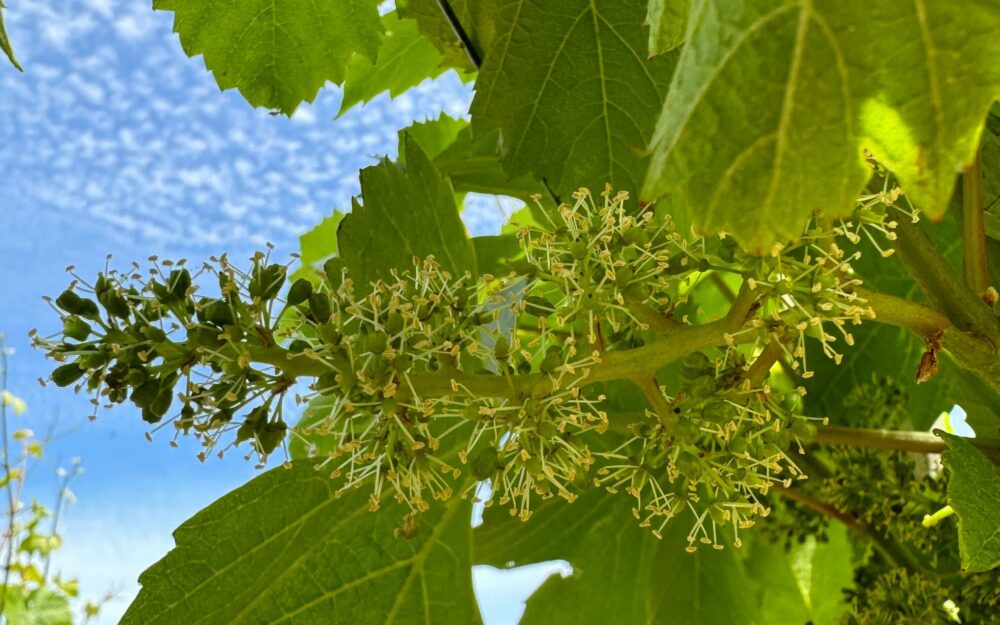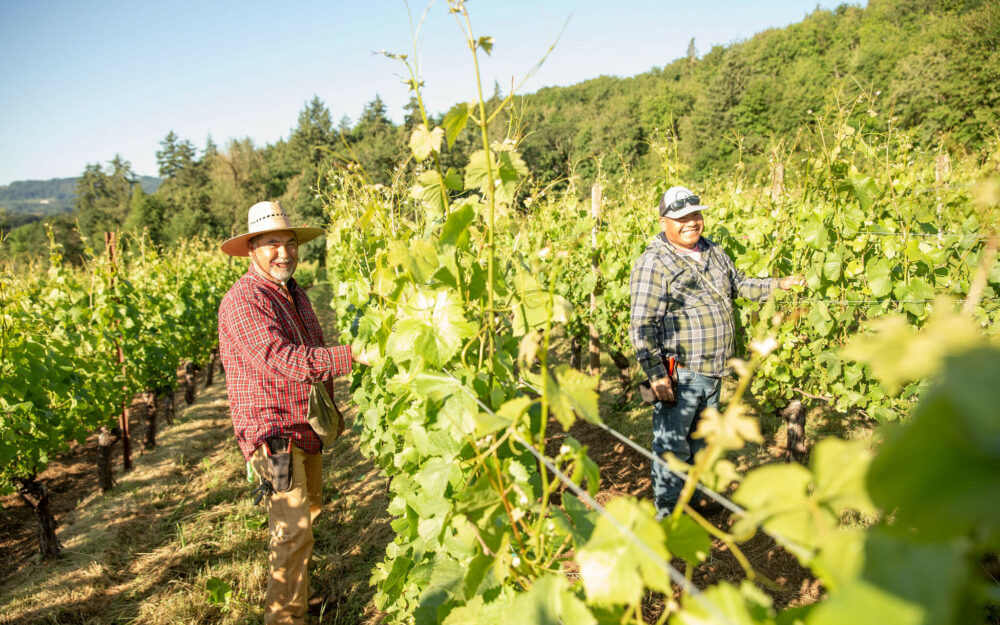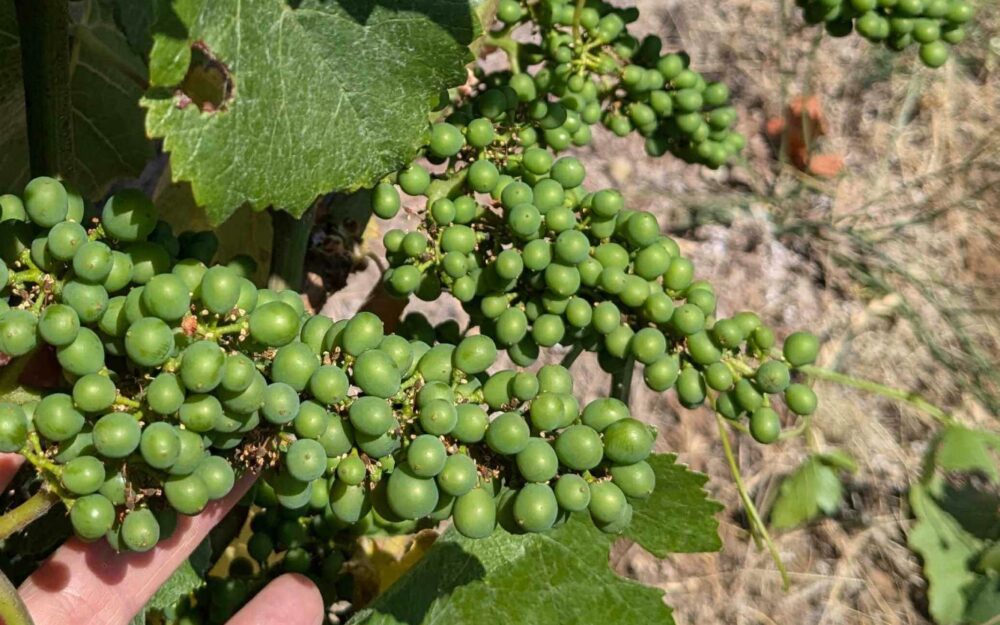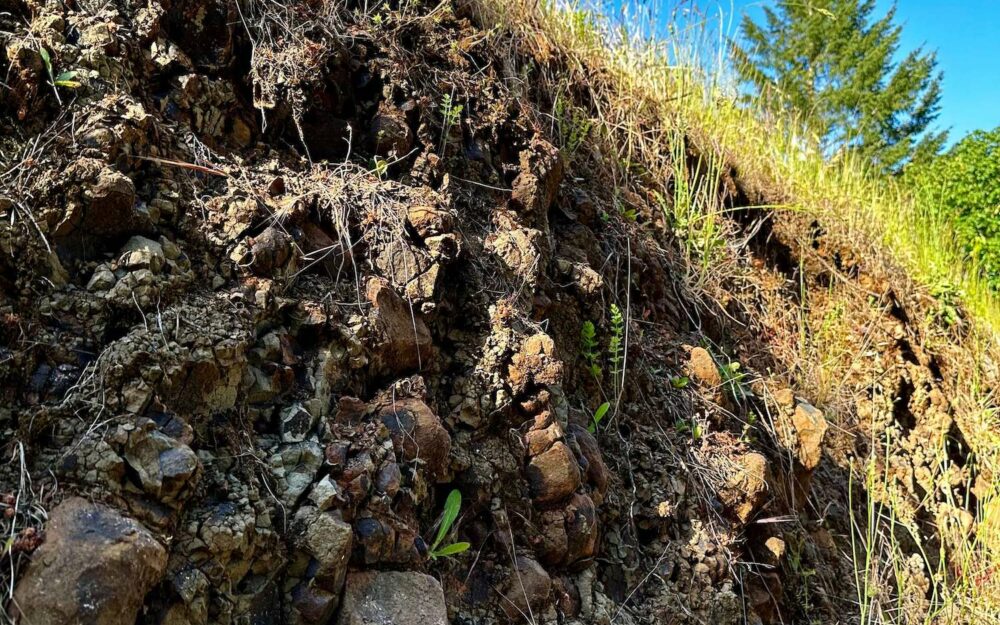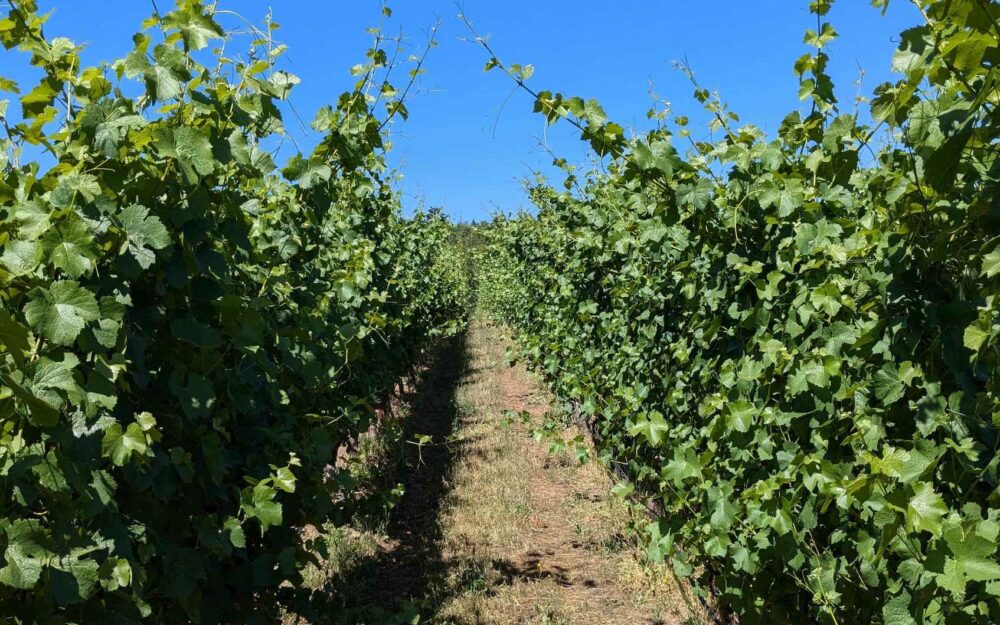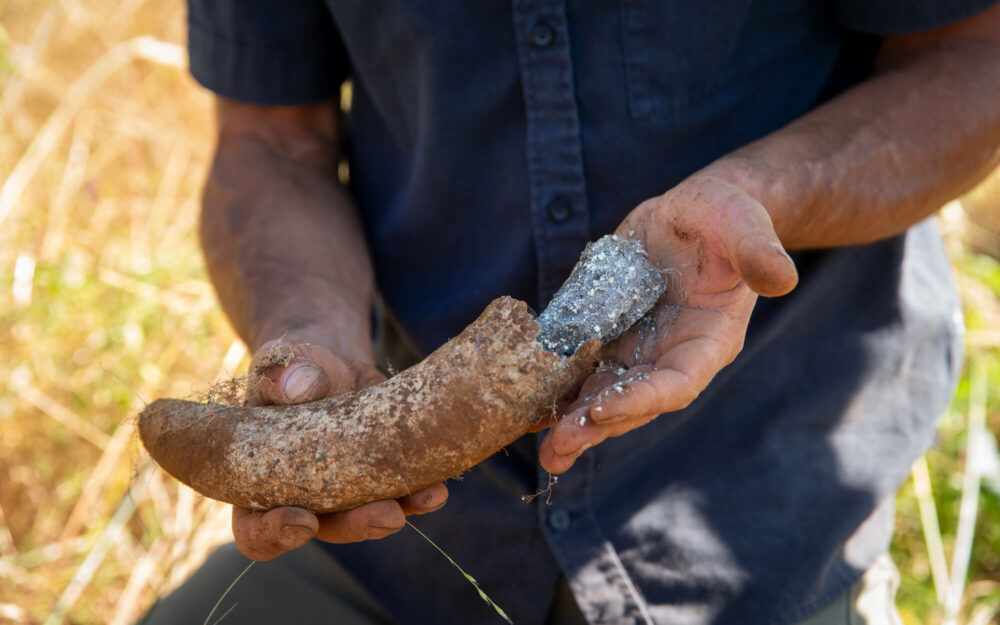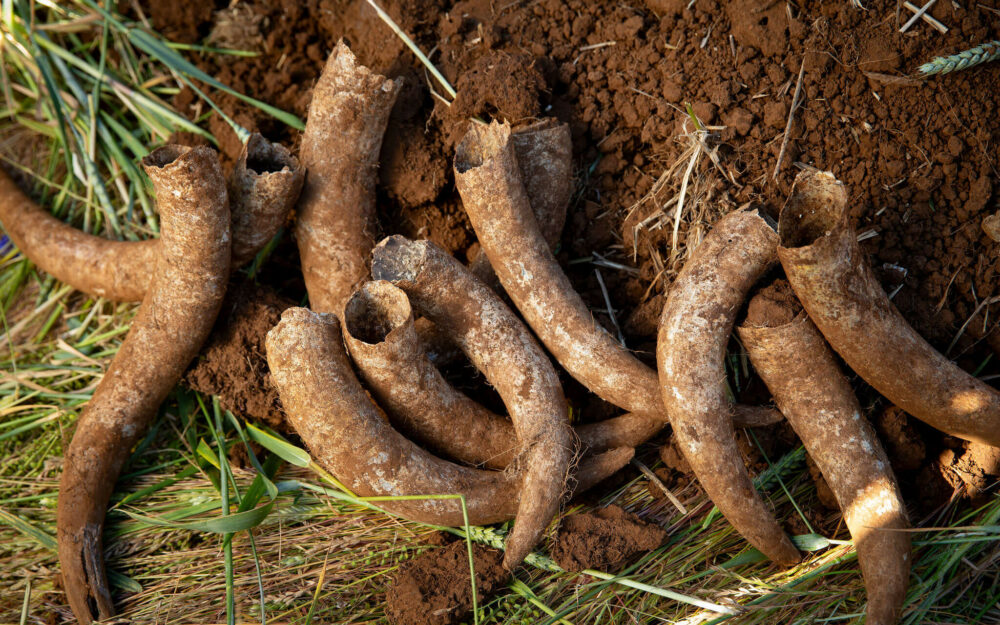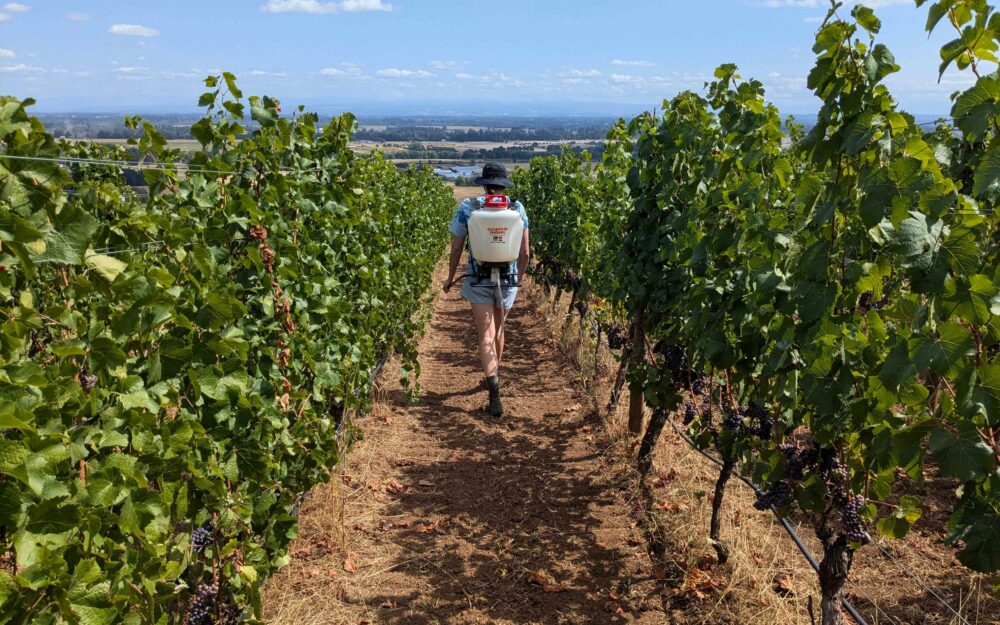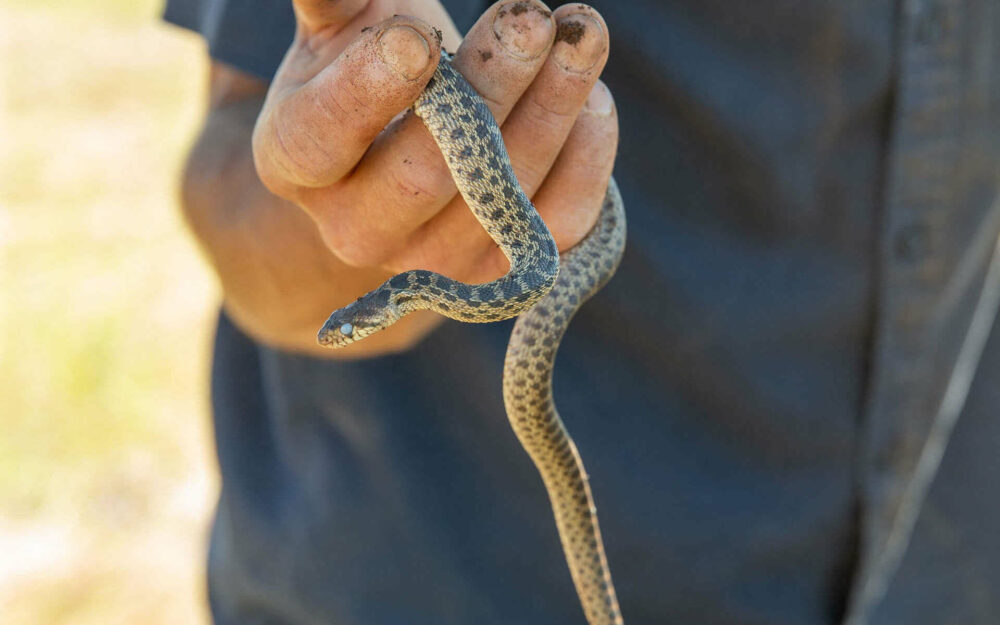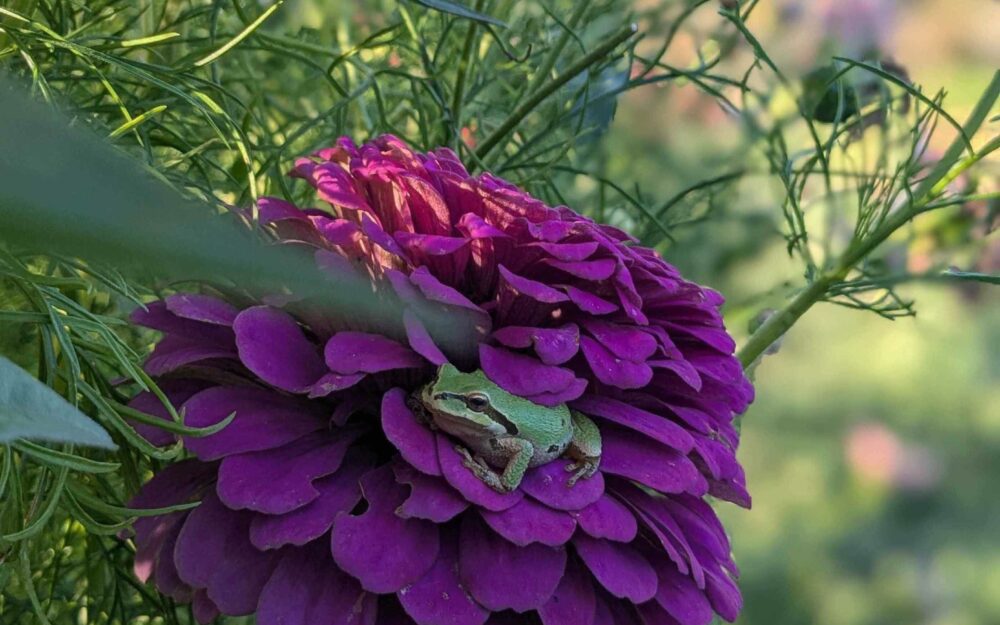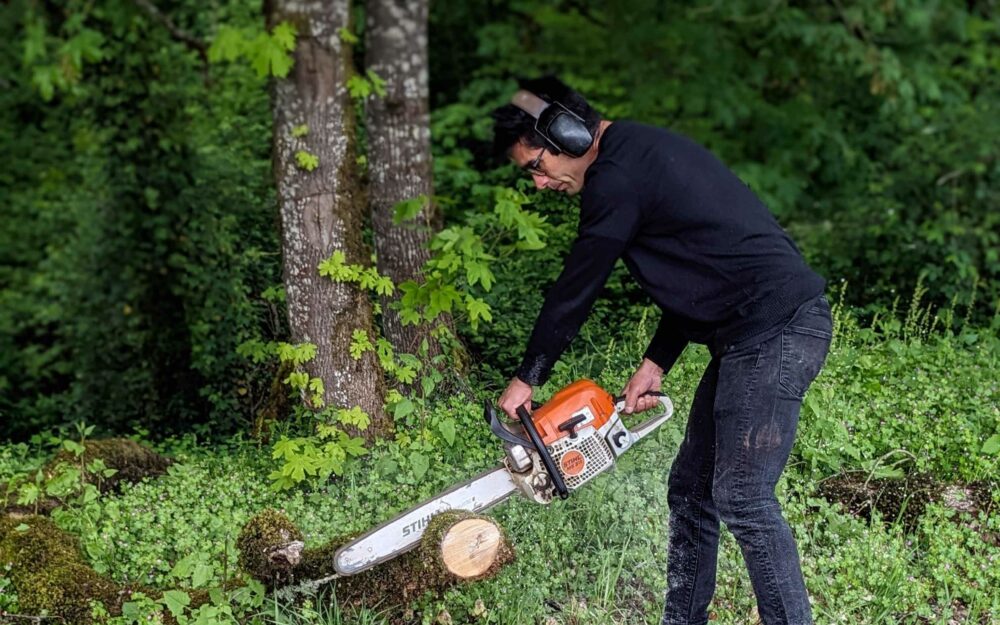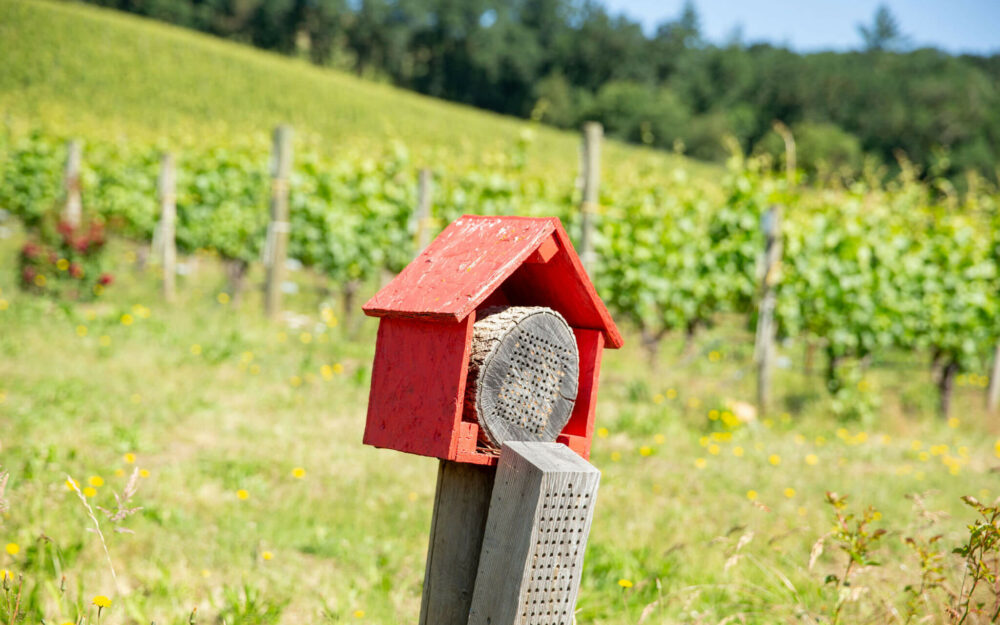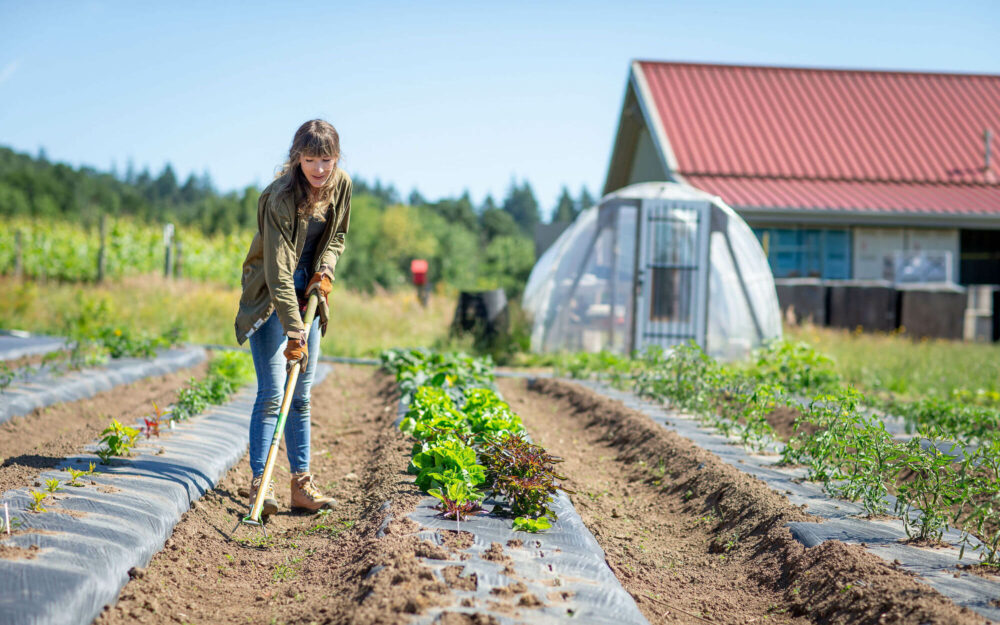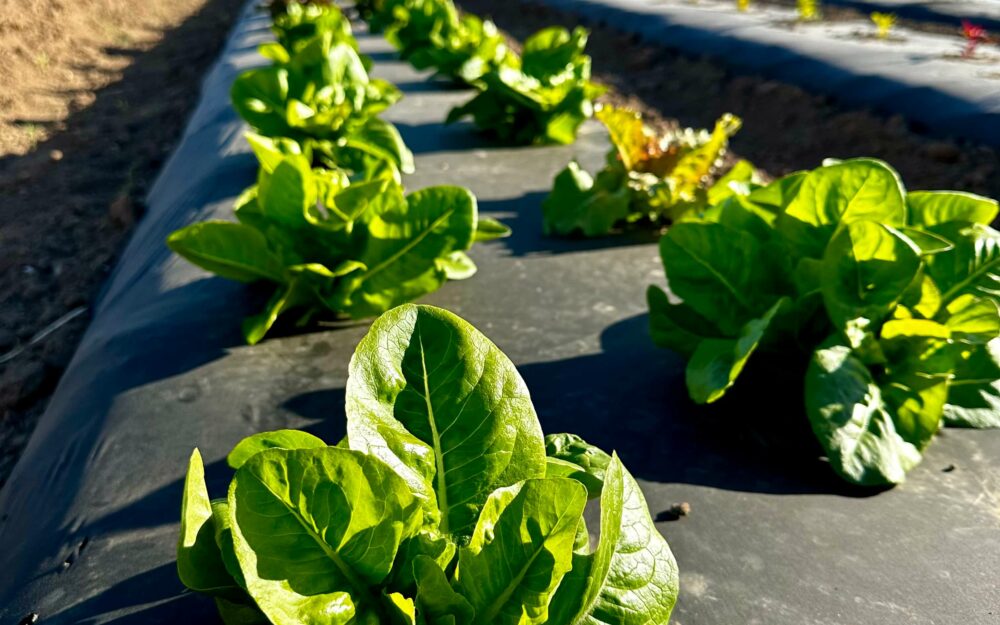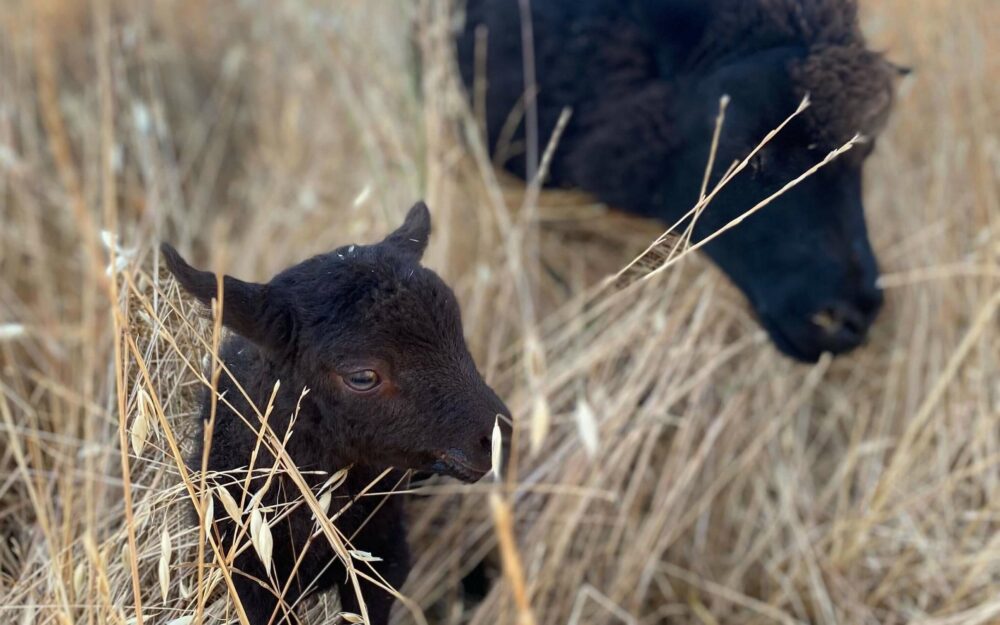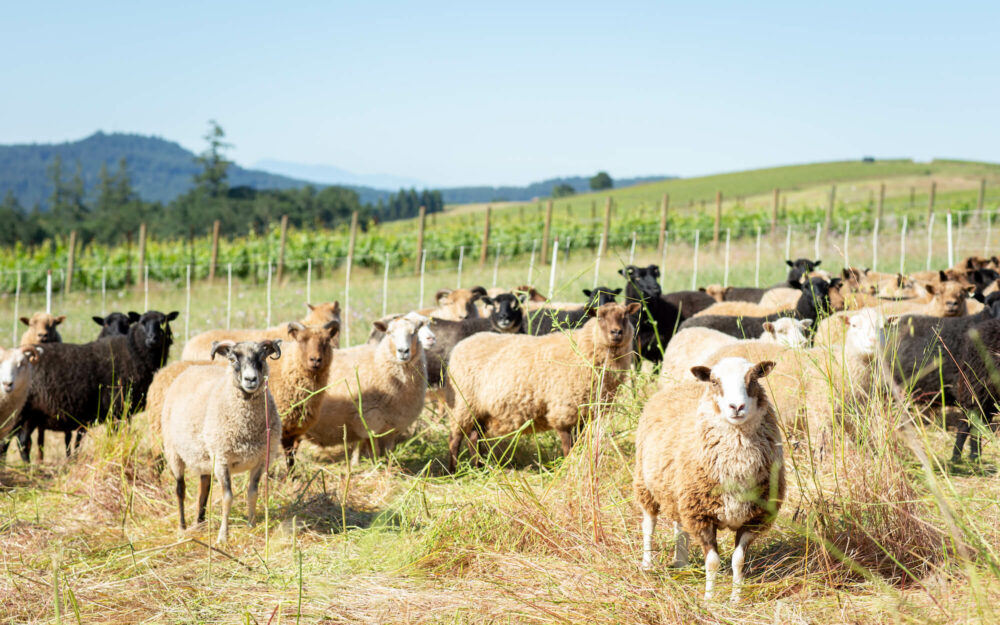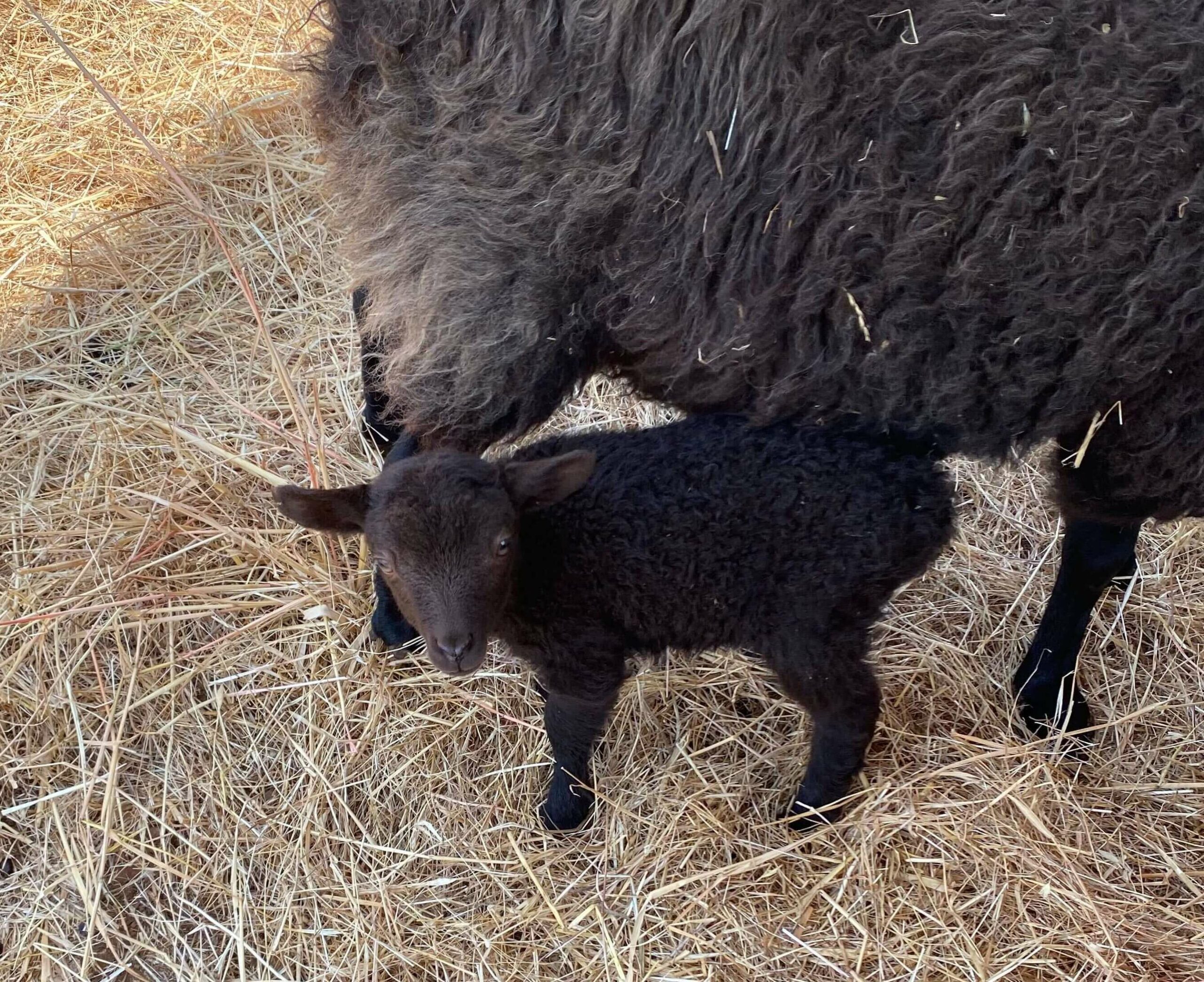Rooted Reflections: Summer 2024
2024 GROWING SEASON – SUMMER UPDATES
Favorable conditions: an early-season rainfall combined with a warm, dry summer
Cristom Vineyards Winemaker and Vineyard Manager Daniel Estrin Collects Biodynamic Farming Prep 500 Horn Manure
Farming is one of the most unpredictable businesses, making the rewards much sweeter or “ripe.” The farm was a buzz all summer, and as we head towards fall, veraison is 99% complete across the estate, bringing the 2024 growing season closer to our busiest time of year—harvest. Let’s look at our farming practices and how the vintage has developed.
BLOOM + FRUIT SET
Louise Vineyard Chardonnay Block 15 bloomed on June 6, 2024, and flowering on June 13, 2024
Bloom was slightly later this year than the average for the past 10 years. The earliest parts of the vineyard, such as our Chardonnay block in Louise Vineyard, began flowering the first and second weeks of June. Bloom and berry development slowed with the arrival of cooler temperatures and rain on the weekend of June 15th, slowing the progression of bloom across the estate.
Soon after, temperatures warmed, and the later blocks were quickly through bloom and into fruit set. Our dedicated vineyard team moved through the estate, positioning shoots for the remainder of the growing season, and overall, we experienced a good fruit set across the estate.
Nearly all of our Estate is dry-farmed. Good soil moisture reserve allowed the vines to grow and tolerate the heat wave we experienced in early July. We had yet to pull leaves; their canopies protected the fruit from direct sunlight.
We spotted veraison on the Pinot Noir fruit in our Jessie Vineyard at the beginning of August. As the month drew to a close, veraison is complete in all but a few of the latest blocks on the Estate.

Jessie Vineyard Pinot Noir Clone 113 on August 2, 2024
SUSTAINABLE WINEGROWING
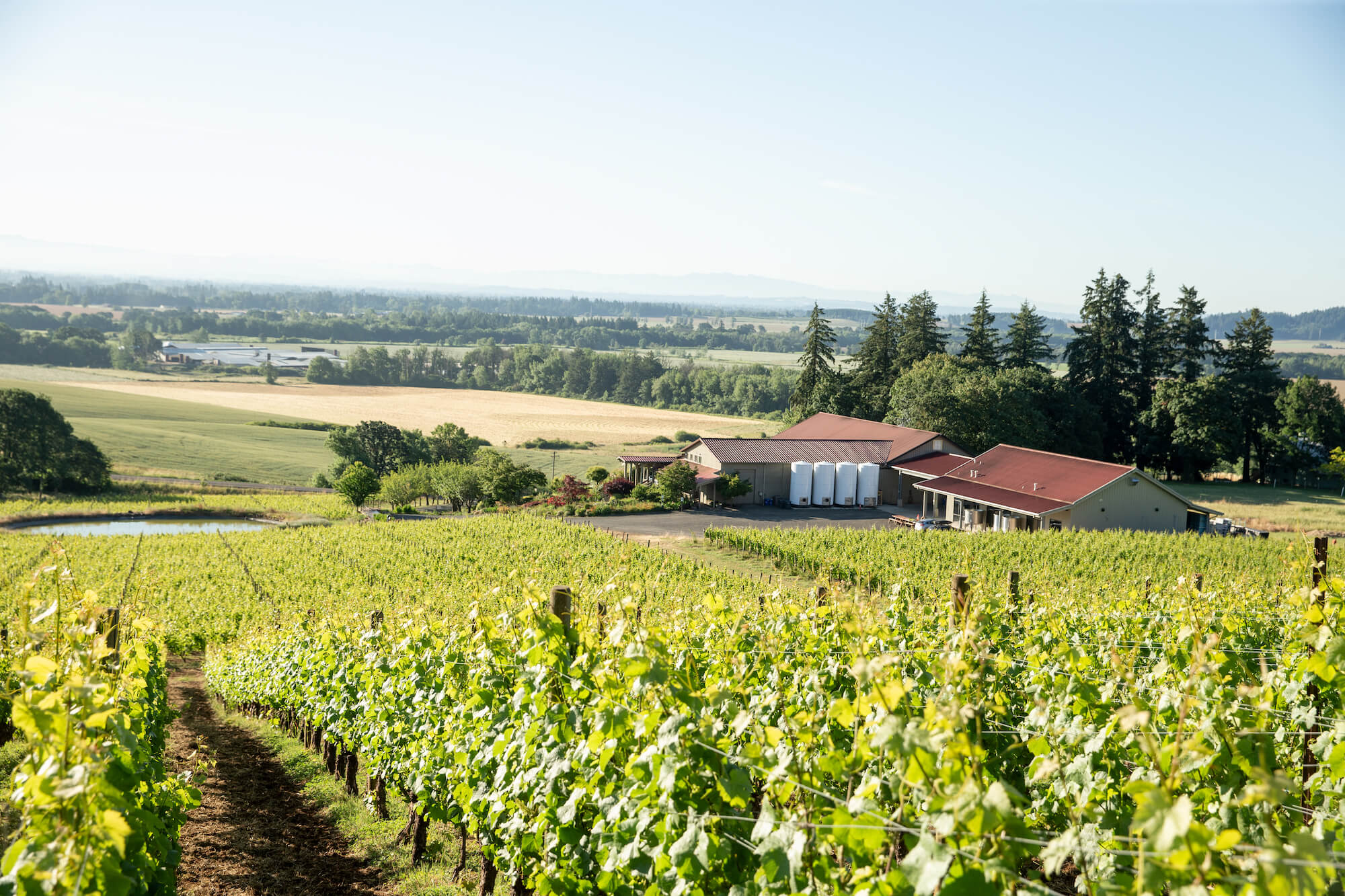
We practice organic and biodynamic farming principles and integrative pest management across our 240-acre Estate. These methods not only enrich our soil but also foster biodiversity, and cultivate a more resilient ecosystem.
For our biodynamic preps, we are making almost all of our own, with most of the plant matter they need coming from our estate; the balance is locally sourced.
In mid-June, our Winemaker and Vineyard Manager, Daniel Estrin, along with Assistant Vineyard Foreman Ivan Orozco, unearthed one of our key biodynamic preparations—500 Horn Manure—from the Paul Gerrie Vineyard, where it had been buried the previous fall.
Throughout the cold, wet winter, the cow manure packed into the horns transformed into rich humus, rich with enzymes, natural hormones, beneficial bacteria, fungi, and digestive juices.
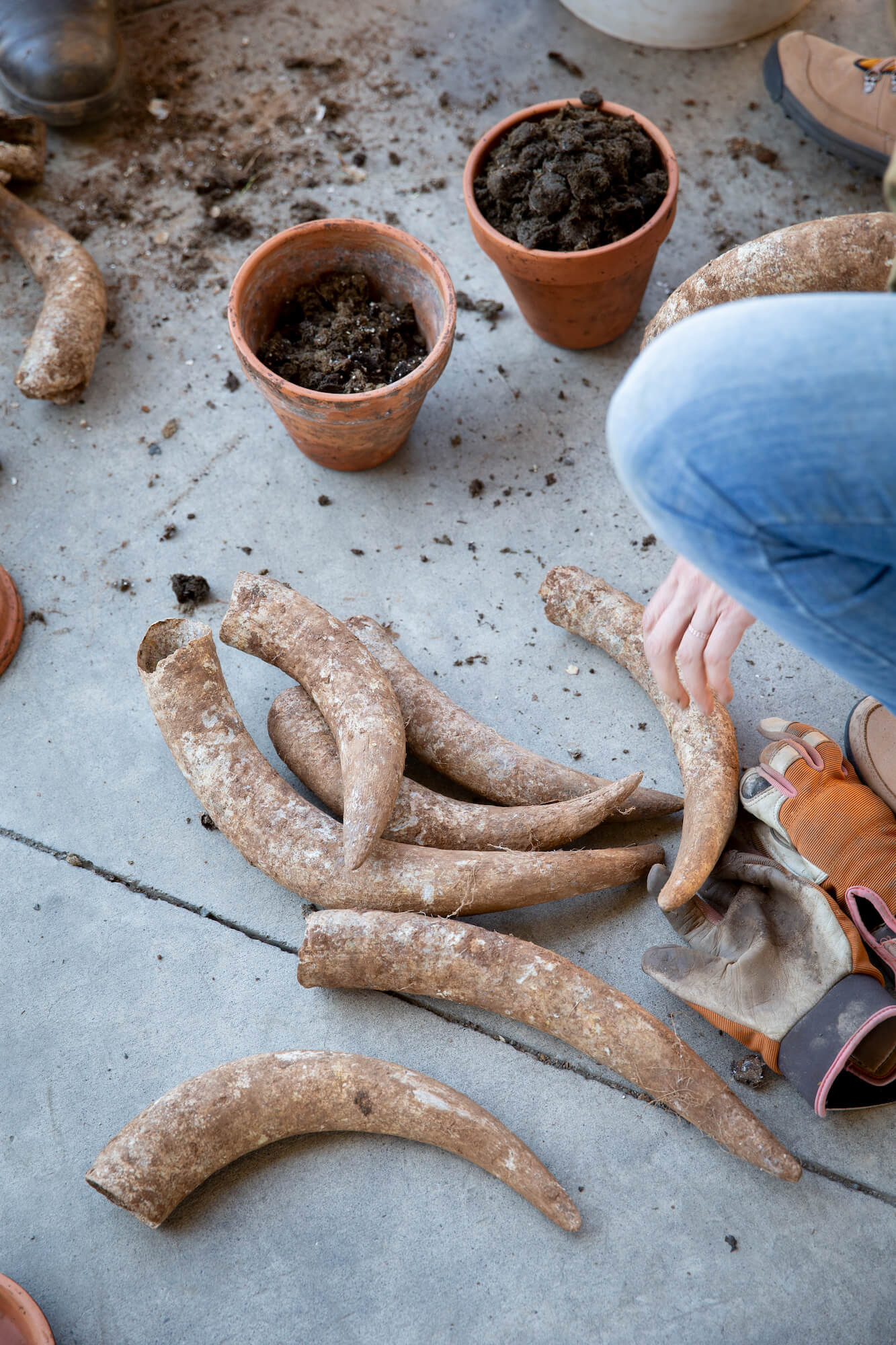
After retrieving the cow horns, we collected the humus and blended handfuls of it with pure Spring water from our Estate, stirring it alternately clockwise and counterclockwise for one hour. This biodynamic spray is then applied across our vineyards throughout the year, stimulating microbial activity, fostering humus development in the soil, improving water absorption and retention, and promoting root growth.
On the waning moon, August 27th, we sprayed our third application of 500 prep for the 2024 growing season.

Around the same time, we initiated another biodynamic preparation—502 Yarrow. Daniel Estrin obtained a stag’s bladder from a hunter friend, carefully drying it around a balloon to form a vessel for stuffing with yarrow flowers. We hung this preparation in a tree within the small forest near the spring at Louise Vineyard, where it remains throughout the summer. In the fall, it is retrieved and buried for the winter. Ultimately, this preparation is incorporated into our compost to invigorate the soil and promote adaptability to the unique conditions of our site. This is particularly beneficial when the compost is spread on young vines and those growing in shallow, rocky soils.
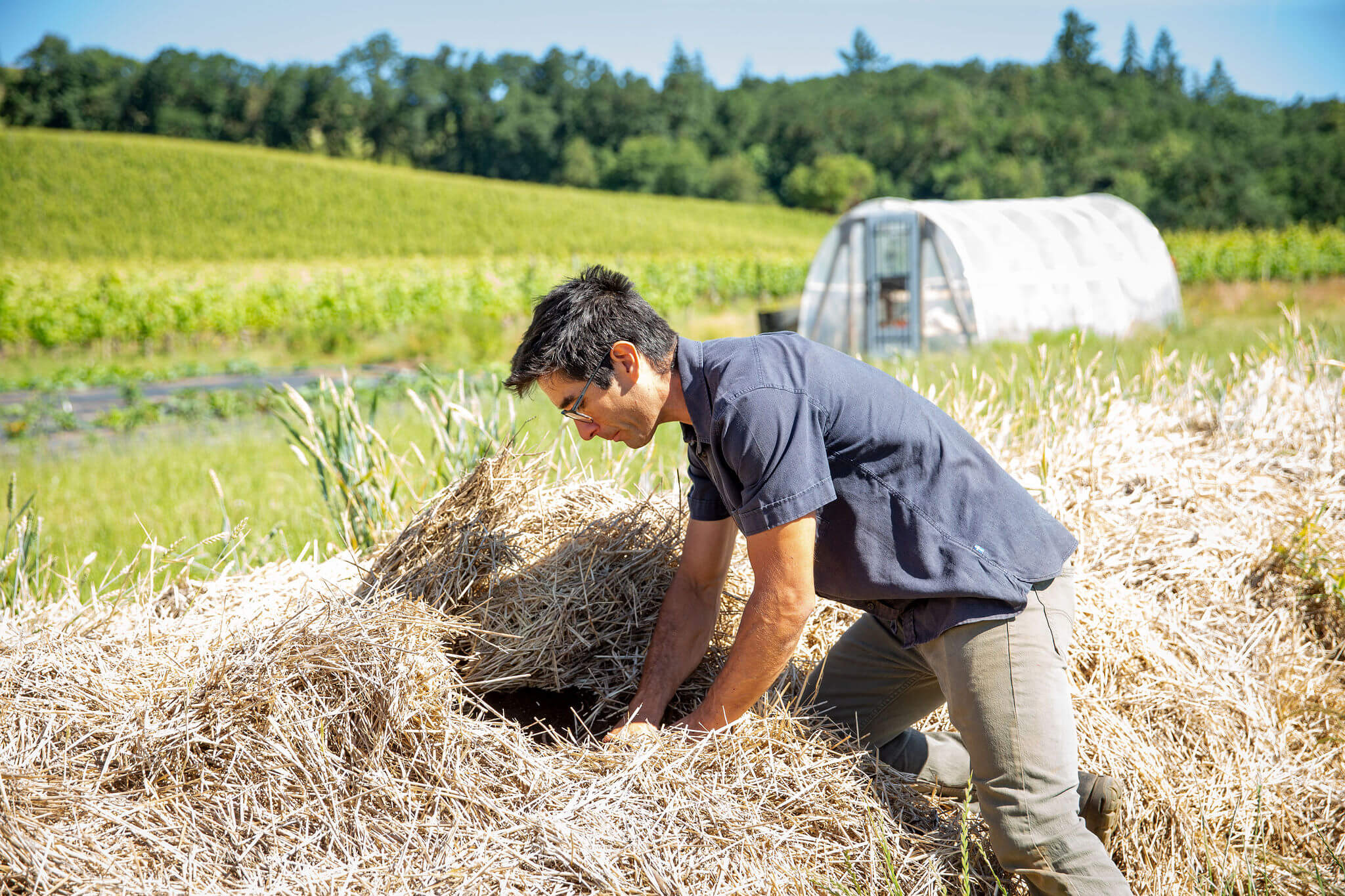
Daniel Estrin checks on the health of our compost piles
In addition to improving soil health, our sprays and compost actively contribute to increasing biodiversity on our land.
We aim to cultivate and expand biodiversity across our farm, fostering a healthier ecosystem for all living organisms. Sightings of snakes and tree frogs, which are especially sensitive to harsh chemicals, are a welcome indication of the vitality of our Estate and the diversity of life thriving here.
Expanding biodiversity on our Estate extends to the plant life surrounding our vineyards. We crafted Mason bee boxes from a fallen oak branch near our spring to support these essential pollinators. Mason bees play a critical role in our ecosystem, pollinating over 95% of the flowers they visit.
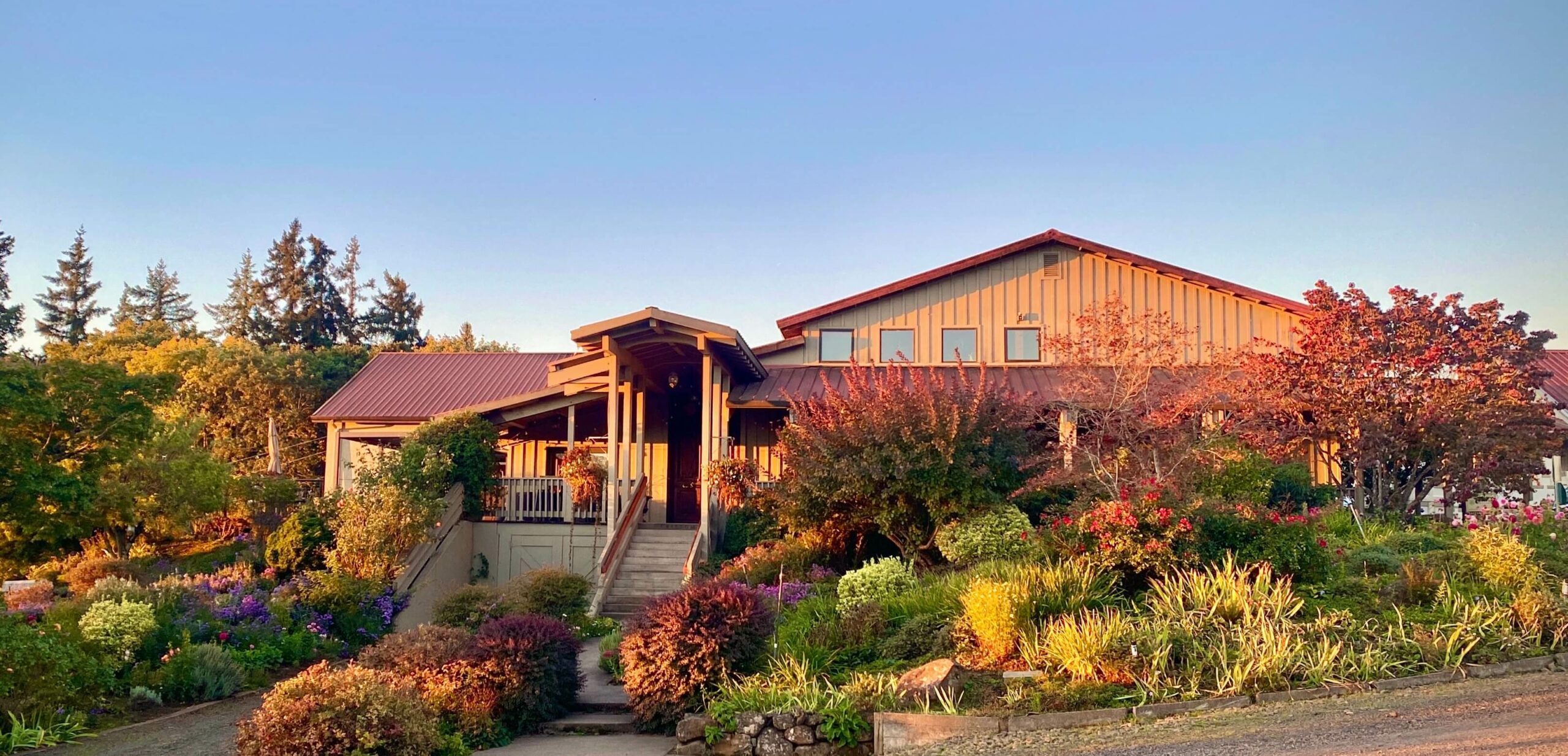
In early spring, we started growing plants in our greenhouse, and by late May, we transitioned them into raised garden beds we prepared alongside the winery and our Louise Vineyard. These gardens nourish our employees, their families, and even Members who attended our July Appreciation party. The surplus produce is donated to a local food bank. This year, our garden flourished with 29 different vegetables and flowers, allowing us to surpass our previous donation totals. In 2023, we donated 253 pounds of produce, providing 211 meals for local families. Throughout August, we contributed 365 pounds of surplus squash, eggplant, sweet peppers, tomatoes, tomatillos, cucumbers, herbs, and watermelon, and another 120 pounds on September 3rd to Yamhill Community Action Partnership.
Farming’s unpredictable challenges can also bring cherished surprises. On July 26th, we joyfully welcomed a new lamb to our flock—meet Whoopsie Daisy! While summer’s dry months can make it more challenging for young animals due to less nutrient-dense grasses, our dedicated team is committed to their well-being. With extra care and the right supplements, we’re helping Whoopsie Daisy and the rest of our flock prosper.
HARVEST SEASON KICKS OFF
Our harvest crew arrived in early August and immediately received new French oak barrels and glassware. In mid-August, we bottled the first of our 2023 Pinot Noirs—including our flagship, Mt. Jefferson Cuvée. Equipment was prepped for harvest, and the team calculated vineyard lag weight estimates to forecast 2024 vintage volumes. The anticipation was palpable coming off of Labor Day weekend.
On Monday, September 9, clear skies and sunny weather welcomed the beginning of harvest season—the first grapes from the Estate were picked from Louise Block 7 Pommard clones!



